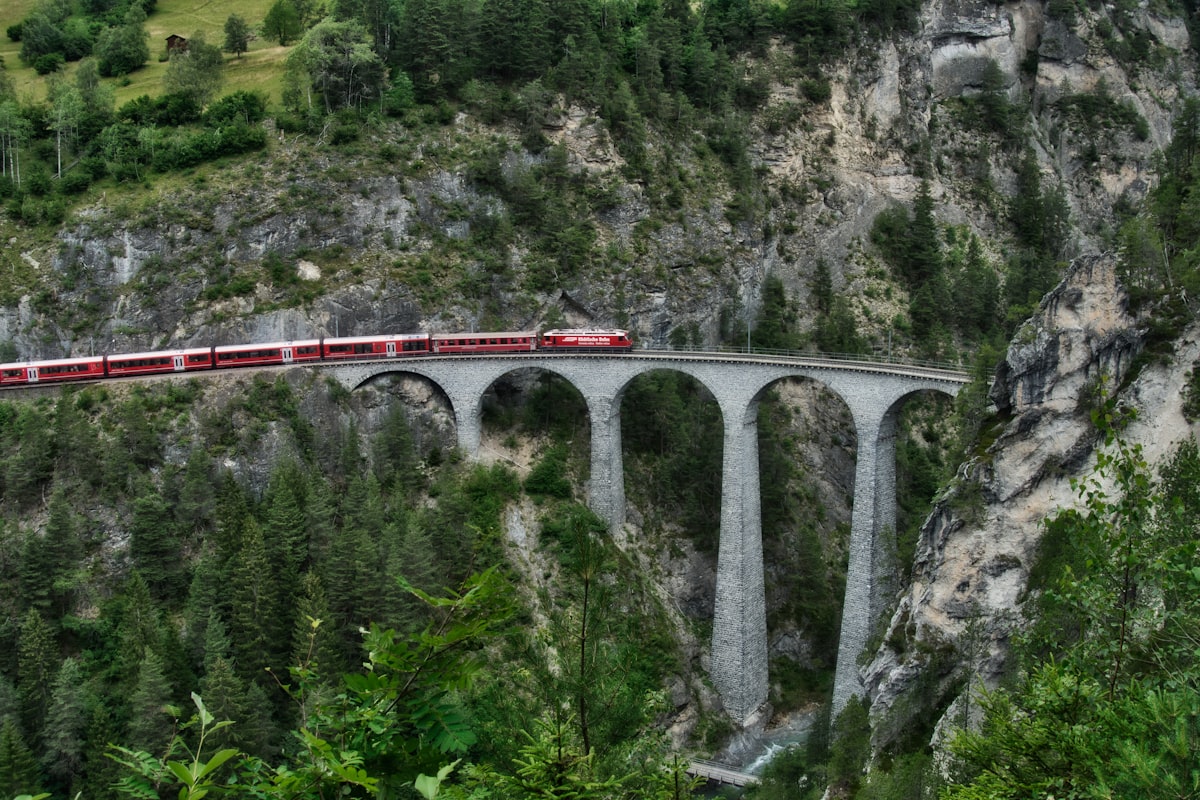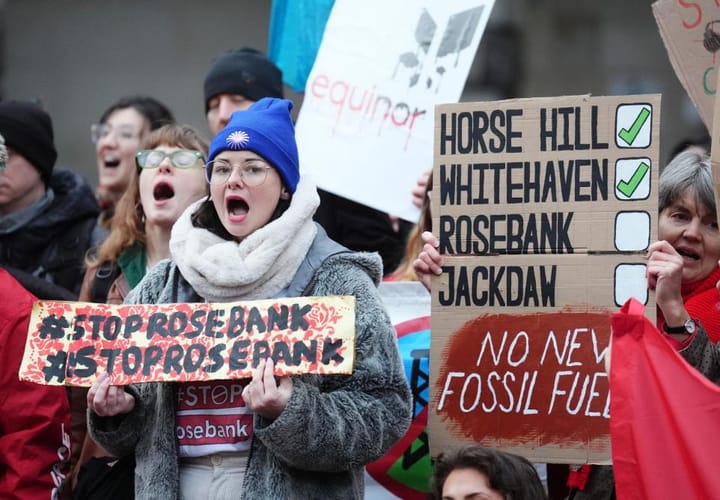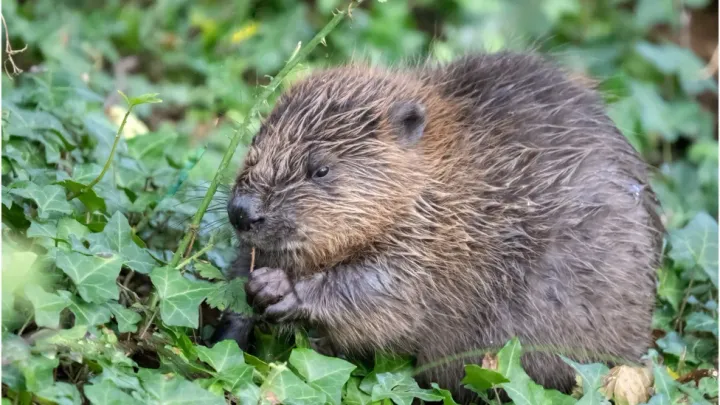Flight free holidays: A practical guide

January and February is the peak travel time for Northern Hemisphere dwellers trying to get south for the winter. If you’re in America, you might consider a week in Miami, Puerto Rico, or the Caribbean, and if you’re in Europe you might be tempted by the budget flights to southern Spain, the Canary Islands, Turkey, etc. In the past I would have joined you, but 2020 is a year for doing things differently, and with it being January, let’s look at one New Year’s resolution worth sticking to: Flight Free 2020.
Flight Free 2020 campaigns have popped up in the States, England, France, with people all over the world taking part. The idea is not that nobody can ever fly ever again for any reason, but that we all need to fly drastically less, and to kick off a mindset for keeping flights to a minimum, people are starting with a year of no flying. Some friends of mine are giving up booze for a year, so not flying for a year doesn’t seem too tough in comparison. This article is not just going to give you a lecture or try to take anything away from you, we’re going to talk about how you can have some cracking holidays, without kicking the planet in the face.

Is flying really that bad?
Yes. Whilst air travel might only account for 2% of annual global greenhouse gas emissions, this ignores the fact that the average Brit has emitted more carbon in the last two weeks than the citizens of seven African nations emit in an entire year. Emissions from the aviation industry are forecast to grow both in real terms and as a proportion of the national total. In the UK, the share of emissions taken up by aviation is predicted to grow from around 6% today to 25% by 2050, even if the sector is successfully capped at level of 37.5 MtCO2 (equivalent to UK aviation emissions in 2005) which has been recommended by the Committee on Climate Change.
If it was a country, aviation would be the 7th largest emitter of CO2 in the world, just behind Germany. In Europe, Ryanair has become one of the top 10 most carbon polluting businesses. — Source: responsiblevacation.com
Other than just the emissions, emitting greenhouse gases at high altitude can have a multiplier effect:
In addition to CO2, aircraft emit nitrogen oxides, known as NOx, which contribute to the formation of ozone, another greenhouse gas. Emissions of NOx at high altitudes result in greater concentrations of ozone than ground-level emissions. Aircraft also emit water vapour at high altitudes, creating condensation trails or “contrails” — visible cloud lines that form in cold, humid atmospheres and contribute to the warming impacts of aircraft emissions. The persistent formation of contrails is associated with increased cirrus cloud cover, which also warms the Earth’s surface. Aircrafts’ high-altitude emissions have a greater global warming impact than they would if the emissions were released at ground level. — Source: biologicaldiversity.org
Why is the market growing if flying is so bad for the environment? Well, most countries do not place a tax on airline fuel, and there are huge subsidies for airline companies all over the world. The rise of budget airlines took advantage of this, and even when these companies are about to go bankrupt, fossil-fuel loving governments just bail them out.
Cheap flights are a hard thing to avoid, especially paired with the fact that other modes of transportation often seem expensive, or much slower. These days we are so used to jumping on a plane and being half a world away within 12 hours that anything else seems arduous or impossible. People don’t want to drive to Blackpool for a week anymore, they want to go to Thailand, or Bali, or somewhere stunning, but this just breeds over-tourism which destroys these amazing places we are rushing to get to.
Looking at the numbers another way: an average “western” citizen has an annual footprint of 12-20 tonnes of CO2. A return flight between London and New York is between 1 and 2.7 tonnes. We could dedicate a whole year to doing everything within our power to half our footprints, then ruin the whole thing with a return hop across the pond.
So what other options do we have, if we want an amazing vacation?

Trains
Trains in Europe are amazing, and they’re getting better all the time. In continental Europe you can get anywhere easily and relatively quickly. Sure, trains are never going to match the speed of planes. Planes hit 600mph, and most high-speed electric trains are around 190-220mph, but absolute top speed is not the only part of the equation.
For those concerned about maximising vacation time in an otherwise busy and stressful life, you’ll be happy to know overnight trains are making a comeback. This might sound like some old-timey Agatha Christie nonsense, but sleeping your way to your destination is an awesome way to remove the stress of flying. Instead of fighting through a million lines, taking your shoes off, unpacking all your electronics, and being violated by those naked scanners, you can finish work, casually womble to the train station, and go to bed.
The Caledonian Sleeper provides a London to Scotland connection, making the highlands seem a lot closer. Probably not one for February, but you’d be surprised how warm it gets up there in summer (these days…)
Mainland Europe has a lot more options for night trains. Check out Nightjet.

My sister is checking out the trains between Bristol and Venice this Spring, hopping on the Eurostar in Brussels to get back to the UK. Assuming you have no interest in stopping at any of the awesome places along the way, the total travel time there is 18 hours. Certainly a flight would be quicker, but with some forward thinking companies are starting to offer extra days off for anyone pledging to go flight free, this time factor seems a lot less relevant.
WeiberWirtschaft, a women’s co-operative in Berlin that supports female entrepreneurs, has told its workers they can have three days’ additional leave if they abstain from flying for a year. Source: bbc.com

Americans have fewer choices. The Pacific Railroad was built in the 1860’s, at which point I think they said “that’ll do.” Still, I took the Seattle to New York City Amtrak train last year, and it was amazing. It was a work trip so they covered it as a business expense, and I got to work from bed for three days. All the time I was enjoying three good meals a day, totally included in the price. It was a great way to recover from an injury, and I also had the opportunity to walk around, chatting to people whenever I wanted.
There is a general trend in Europe towards removing airline subsidies to stop “budget flights”, and reducing rail costs at the same time so people can still get places. This trend is currently coming too slowly, but hopefully Flight Free 2020 will kick things up a notch.
Other positive disruptions are happening in the world of trains, like Flixtrain (a Flixbus spinoff). They’re offering tickets all over Germany for €9.99, which can make for some interesting options when you pair it up with Nightjet and other European train providers.

Carpooling
Driving isn’t the best thing for the environment most of the time, but a car full of people all heading the same way for vacation is way better than most flights, and if it could be a hybrid or electric then you’ve got yourself a green holiday!
BlaBlaCar covers most of Europe, US and Mexico.
Poparide lets Canada in on the fun.
Australia has about 20 sites which all describe themselves as the “most popular carpooling site in Australia” but Hop Hop Ride looks alright.
Then there’s Carpool World aiming to solve carpooling for “The World”.
Carpooling can be an awesome way to find other people heading your way, and if you’re a group of mates then grab the most efficient vehicle you can find and set off somewhere. They’ve been some of my favourite trips that didn’t involve a bike. Actually that’s a lie, I put my bike on a bike rack. 😅

Ferries
Sometimes there is water in the way of where you’re trying to go, which can hamper your train/car-pooling plans.
Whilst some ferries are switching to electric, most ferries are honking great diesel machines and there’s no pretending they’re environmentally friendly. That said, ferries are carrying 50-100 trucks, and the average person weighs about as much as one of their spare tyres, so your part of the footprint is almost negligible.
Emissions data from DfT:
- Ferry foot passenger, 0.02kg CO2e per passenger km, (car passenger 0.13kg CO2e)
- Flights, domestic = 0.3kg CO2e, short haul
Every journey is different, but ferry about ten times less polluting if travelling by bike. — Source: @FlightFree2020 on Twitter
Cruises, however, do not get a pass. The extra weight of all the swimming pools, jet skis, shuffle-board equipment, and 10 bars (complete with robot bartenders) mean cruises contribute similar greenhouse gases to flying. Avoid cruises at all costs.
So, if you were considering flying somewhere awesome, take a ferry somewhere awesome. If you were already planning a ferry trip, consider taking bikes with you instead of cars. Taking a bike on a ferry might seem daunting, but it’s a piece of cake.
I got a bit fed up with the British weather causing mushrooms to grow in my cycling shoes, so as soon as Christmas wore off I hopped on a ferry to France, took a train to Spain, and cycled through the mountains to Portugal.

Brits wanting a slightly easier trip could get the ferry straight to Bilbao (or Santander) from Portsmouth, and be riding around here.

Ships can handle far longer journeys than just island hops. At some point in 2020 I’ll be moving back to the States, at which point I can spend 8 days on a cargo ship. There are a lot of different cargo ship providers which take passengers, but I like the look of Maris Freighter Cruises.

After a year of cycling 12,000km, I’ll be happy to spend 8 days sitting the hell down, reading a few books, drinking a bit o’ rum, and playing cards with some sailors.
Alternative holidays
Try figuring out alternative vacations that don’t require going far. In many countries (UK included) the winter is the perfect time to go white water kayaking, as the rivers are at their highest, a wetsuit keeps you toasty, and it’s one of the best sources of adrenaline you can get. Although, I’d be down for a few rounds of Quarry Karts too.
You can go hiking in the Alps, as trains run all throughout the place. A short ferry or train from most of Europe and you’re exploring the beautiful Netherlands. I don’t just mean wandering in circles around Amsterdam (although that is fun) but grabbing a rental bike and exploring places like National Park Zuid-Kennemerland on the coast.

This area not only reminds me of South Africa, but from this point you go up a hill to get to the sea. Not up and down, just up. The sea is substantially higher than where you’re stood. Comprehending that is one thing, but when I saw it first hand my brain pretty much exploded.
There’s loads of amazing stuff to see and do in Europe, let’s make a trend out of this and make it stick.
Will it help?
If you fly, then the emissions are definitely going to happen. If you don’t fly, they won’t, and maybe you can convince a few other people to join you, and maybe it will have a big enough network impact to change some policy.
Regular citizens all over the world are struggling to figure out how they can avoid climate oblivion. If you’re reading this you’re probably one of the amazing people already offsetting their carbon footprint for the cost of one coffee a month, but other than offsetting ourselves, it makes sense that we are eager to do more. With a few recent elections showing that major world powers are going to continue with a “business as usual approach”, we need to find other ways to make an impact. With democracy failing to make the change we need, sending a message via capitalism might just be the answer.
Hit polluters where it hurts – their wallet. Take to trains and ferries, support electric-based transportation, demand more ferries switch to electric, and maybe we can make a dent. That said if you’re in Norway take it away, fly your electric routes as much as possible. The more you support electric aviation the quicker they’ll scale things. Increasing interest and funding for electric aviation, with a decrease in traffic for air travel, is pretty much our only hope at sorting this industry out.
Open up Twitter or Facebook, and share the message with your friends: “This year I have been inspired to go #FlightFree2020. Instead of participating in over-tourism, I’ll be exploring the natural beauty closer to home!”



Comments ()